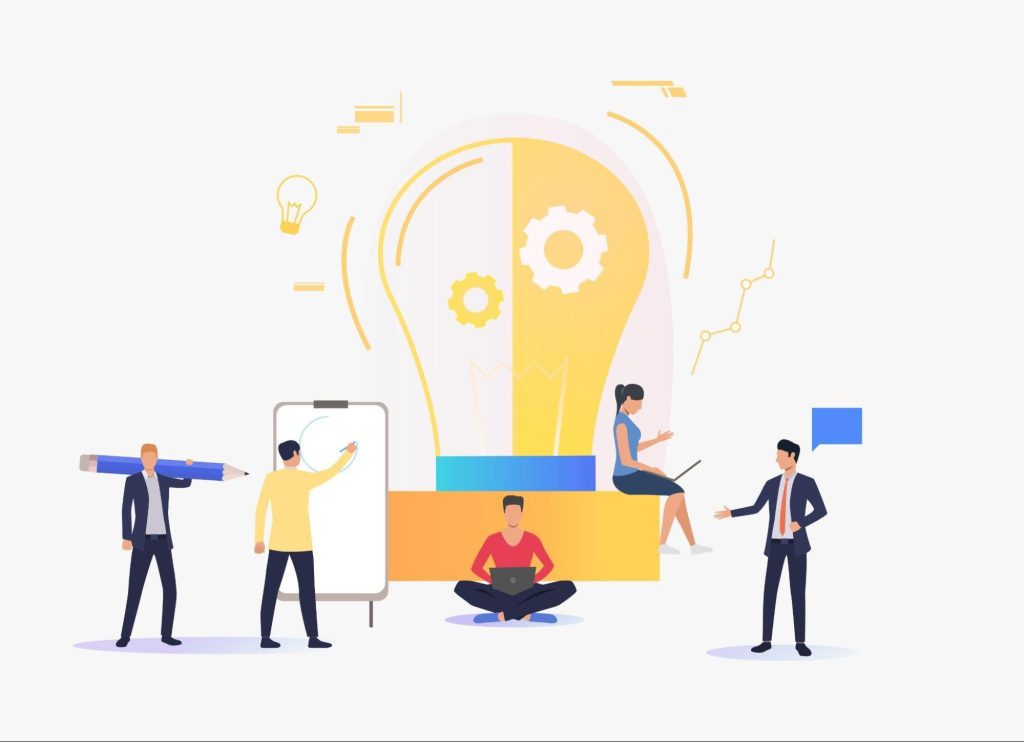SaaS HR refers to cloud-based human resources software that enables organizations to manage their HR processes and functions digitally. SaaS HR offers a platform for businesses to develop their digital capabilities, experiment, and improve their team management procedures. Teams all over the world rely on software-as-a-service (SaaS) technologies to complete tasks, collaborate remotely, and work more productively than before. Such applies to remote jobs that have taken industries by storm. Companies can reflect on their processes during this crucial stage and prepare them for the future.
SaaS HR assists organizations to anticipate occurrences like skill shortages, star performers, staff churn, abnormal activity, and other HR-related activities. Here are a few strategies businesses are leveraging SaaS HR to develop their digital skills.
1. Recruitment and onboarding
Recruitment and onboarding are critical processes in HR that can have a significant impact on the success of an organization. In recent years, HR software-as-a-service (SaaS) solutions have emerged as a popular way to streamline and optimize these processes.
Recruitment in SaaS HR typically involves the use of an applicant tracking system (ATS) to manage job postings, resumes, and candidate communications. These systems can automate many aspects of the recruitment process, such as resume screening, scheduling video interviews, and sending automated emails to candidates. This can save time for HR professionals, allowing them to focus on more strategic tasks such as interviewing and evaluating candidates.
Onboarding in SaaS HR typically involves the use of a digital platform to manage the process of bringing new employees into the organization. This can include tasks such as completing paperwork, setting up payroll and benefits, providing access to company systems, and introducing new employees to their colleagues and the organization’s culture. SaaS HR solutions can automate many of these tasks, reducing the administrative burden on HR professionals and allowing them to focus on providing a high-quality onboarding experience for new hires.
Overall, SaaS HR solutions can help organizations streamline their recruitment and onboarding processes, save time and resources, and provide a better experience for both candidates and new employees. However, it’s important to carefully evaluate different SaaS HR solutions to ensure they meet the unique needs of your organization and integrate effectively with your existing systems and processes.
2. Employee engagement and workforce management
Human Resource Software as a Service is a rapidly growing industry, and it is playing an increasingly important role in the development of new digital capabilities. One area where this is particularly evident is in employee engagement and workforce management.
Employee engagement refers to the level of commitment and motivation that employees have towards their work and the organization they work for. It is a crucial factor in the success of any business, as engaged employees are more productive, more creative, and more likely to stay with the company long-term.
SaaS HR solutions can help companies to improve employee engagement by providing tools and resources to help managers and HR professionals better understand and respond to the needs of their employees. For example, many SaaS HR platforms include features such as pulse surveys, feedback tools, and recognition programs that can help to foster a culture of engagement and positivity.
Workforce management is another area where SaaS HR solutions can help businesses to develop new digital capabilities. Workforce management refers to the process of managing and optimizing the use of a company’s human resources, including scheduling, time and attendance tracking, and performance management.
SaaS HR platforms can provide companies with powerful tools to manage their workforce more effectively, such as automated scheduling and time tracking, performance management tools, and analytics and reporting capabilities. These tools can help businesses to optimize their staffing levels, reduce labor costs, and improve overall productivity and efficiency.
Overall, the use of SaaS HR solutions is becoming increasingly important for businesses looking to develop new digital capabilities in the areas of employee engagement and workforce management. By leveraging the power of these platforms, companies can better understand and respond to the needs of their employees, optimize their use of human resources, and drive growth and success in the digital age.
3. Performance management
It is a critical component of HR management, and in the context of SaaS HR, it can be a powerful tool for developing new digital capabilities. Here are some ways that performance management can help with this:
- Identify digital skills gaps: Performance management allows you to assess the current digital capabilities of your workforce and identify where they may need assistance. You can use this information to develop training programs that will help your employees acquire the digital skills they need to perform their jobs more effectively.
- Set goals for digital capabilities: Setting clear goals and milestones within your organization will always be crucial. By setting targets for digital skills, you can encourage employees to focus on acquiring the necessary knowledge and experience to meet these goals.
- Monitor progress: Tracking employee progress allows you to identify any areas where employees may need additional support or training.
- Provide feedback and recognition: These systems can aid employees as they develop their digital capabilities. By providing regular feedback, you can encourage employees to continue to focus on developing their digital skills.
- Link performance to career development: By linking digital skills development to career advancement, you can motivate employees to invest time and effort into acquiring new skills and developing their digital capabilities.
4. Learning and development
Learning and development in SaaS HR can be a powerful tool to develop new digital capabilities. Here are some steps you can take to make the most of SaaS HR in your learning and development initiatives:
- Identify the digital capabilities you need: Start by identifying the digital capabilities your organization needs to succeed. This could include skills related to data analytics, digital marketing, or software development.
- Choose the right SaaS HR platform: There are many SaaS HR platforms available in the market, and it’s important to choose one that aligns with your learning and development goals. Look for a platform that offers personalized learning experiences, mobile accessibility, and robust reporting and analytics features.
- Create engaging content: Use the SaaS HR platform to create engaging content that aligns with the digital capabilities you want to develop. This could include interactive simulations, video tutorials, or gamified learning experiences.
- Encourage social learning: Social learning can be a powerful tool to accelerate learning and development. Use the SaaS HR platform to facilitate discussion forums, mentorship programs, and other collaborative learning experiences.
- Measure your results: Use the reporting and analytics features of your SaaS HR platform to track the progress of your learning and development initiatives. This will help you identify areas for improvement and make data-driven decisions about your learning and development strategy.
5. Reduce human bias
Reducing human bias in SaaS HR (Software as a Service) is essential to developing new digital capabilities that promote diversity, equity, and inclusion in the workplace. Here are some strategies that can help:
- Develop objective criteria: To minimize bias, it is essential to create clear, objective criteria for assessing job candidates. This can include standardized assessments, structured interviews, and pre-defined job requirements. Using data-driven analysis can help remove subjectivity in decision-making.
- Use AI-powered tools: AI-powered tools can help SaaS HR platforms minimize human bias by removing human decision-making from the recruitment process. For example, machine learning algorithms can help identify patterns in job applications and resumes to help recruiters screen candidates more efficiently and identify potential candidates that may have been overlooked in the traditional recruiting process.
- Diverse recruitment panels: Another way to reduce human bias is having people from different backgrounds and with different perspectives can help eliminate unconscious biases and ensure a more diverse candidate pool.
- Educate recruiters: HR professionals should receive training on identifying and reducing unconscious bias. This can include developing an awareness of the potential for bias, providing tools and strategies to identify and mitigate bias, and teaching recruiters to consider candidate skills, qualifications, and experience over subjective factors.
- Monitor outcomes: SaaS HR platforms should track recruitment outcomes to identify any areas where bias may still exist. This can include analyzing recruitment data by gender, ethnicity, and age to ensure that the selection process is unbiased and equitable.
By taking these steps, SaaS HR providers can develop new digital capabilities that minimize human bias, create a more diverse workforce, and promote inclusion in the workplace.






